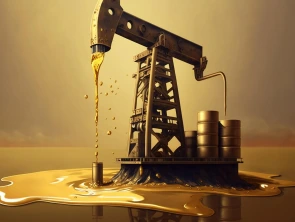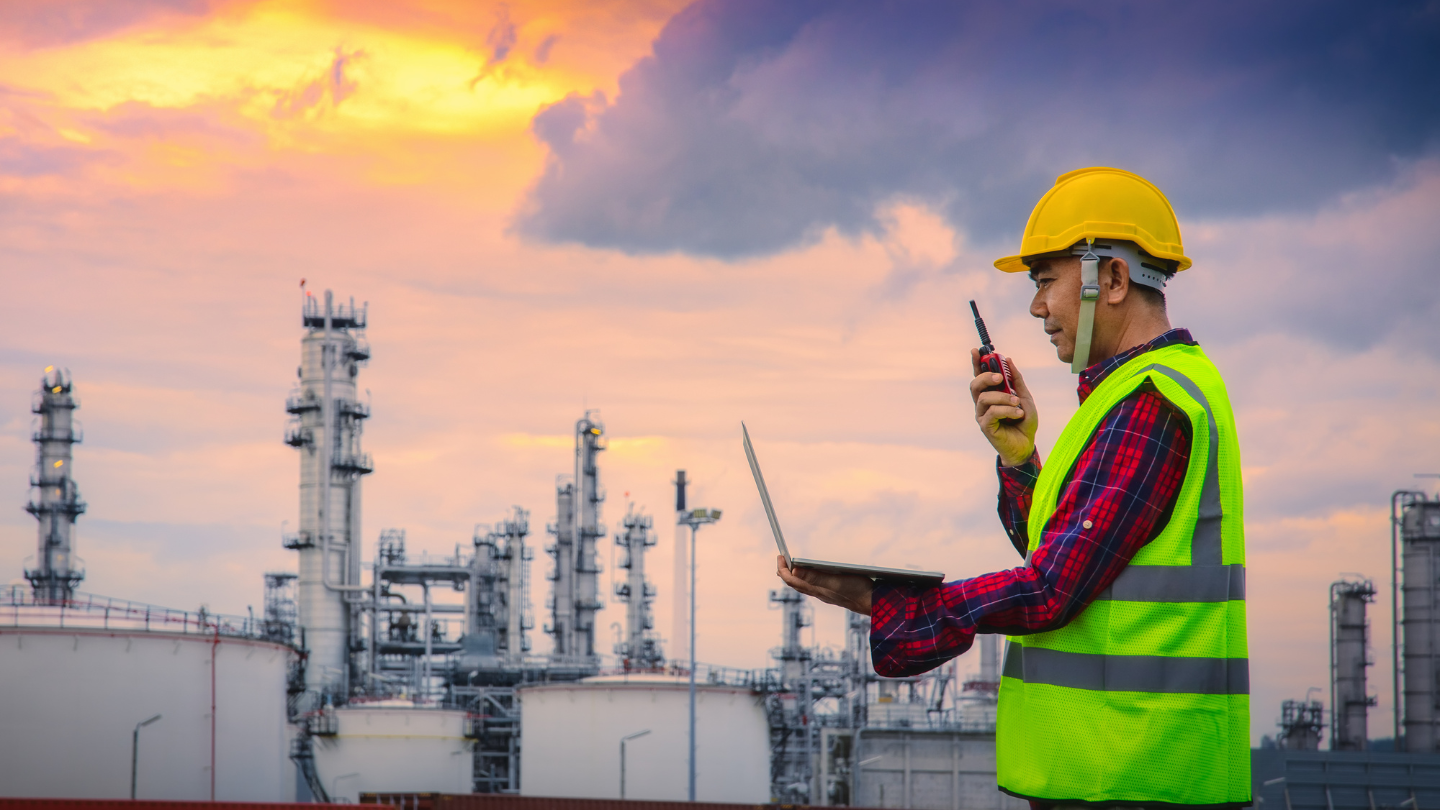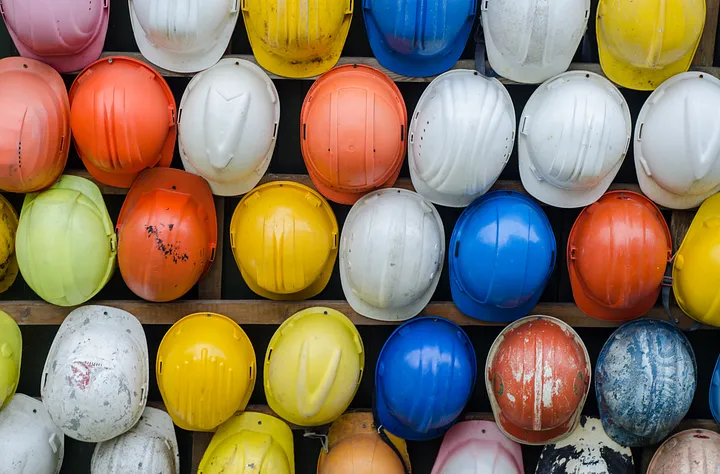Front-End Engineering Design (FEED) is a crucial phase in the development of oil and gas projects. It involves detailed front-end engineering and design work that provides a comprehensive blueprint for the project, including process flow diagrams, piping and instrumentation diagrams, and equipment specifications.
FEED engineering studies are essential for accurate cost estimation, risk assessment, and decision-making regarding the project’s feasibility and viability. Let’s discuss its role in ensuring safety and compliance in oil and gas projects.
Interested in enhancing safety and ensuring compliance? Discover our process safety management services now!
What is FEED Design in Oil and Gas Projects?
FEED is one of the key development process phases of the oil and gas project, which takes place after the conceptual design. This is also known as a feasibility study and happens before the EPC (engineering, procurement, and construction) stage. Fundamentally, it addresses the identification of project work and the handling of technological issues that come with a project.
FEED basic engineering constitutes the creation of process flow diagrams, piping and instrumentation diagrams, equipment layouts and other specifications required. Thus, it identifies risks and optimizes the design to establish technical and economic efficiency, along with avoiding unnecessary modifications. Stakeholders get adequate information from FEED to make decisions and set good bases for project execution.
Key Components of FEED Design in Oil and Gas Projects
The Front-End Engineering Design (FEED) phase in oil and gas projects lays the groundwork for successful execution by defining essential project elements. Below are the key components:
Facility Plot Plan
The plot plan displays the organization of all installations, pipes, and structures in relation to space and accessibility for operations or maintenance.
Cost Estimates
The owning department develops cost estimates in terms of material cost, labor cost, and cost contingency. They come up with a realistic investment picture that aids in the budget preparation.
Piping Show and Facilities Arrangement (P&ID)
P&ID documents depict the alignments between pipes, instrumentation, and vessels and act as a good reference point in regard to the design and safety reviews.
Support Structures Design
Structural designs serve to guarantee that the equipment is placed on platforms, racks, or foundations and can operate in different conditions.
Control Philosophy
This component outlines the overall automation strategy shape of strategy, stating how processes should be supervised and managed in order to be safe and efficient.
Electrical Diagrams
Electrical layouts involve illustrations that depict power systems distribution and need to meet the various required standards.
Process Flow Diagrams (PFDs)
PFDs give an overall view of the process while emphasizing inputs, outputs, and vital activities that must be carried out.
Risk Management
It is a good practice to minimize all possible risks prior to the start of a project so that time and money are not wasted, and the workforce is safe.
Design Optimization
Technical achievability, cost optimization, and compliance with project objectives are maintained by the constant improvement of the design.
Discover real-world results with our engineering consulting services
The Role of FEED Design in Ensuring Safety in Oil and Gas Projects
Front-end engineering design in oil and gas projects provides a detailed road map for the development of the process. It is carried out following the conceptual design or feasibility study stage and involves the determination of technical, operational, and financial parameters. FEED design engineering gives clear documentation of the process flow diagrams, equipment details, and cost analysis that are used in the next phases of EPC.
FEED also guarantees safety since the potential hazards are detected right from the onset of the project. It provides options for modifying or minimizing safety issues and compliance with the necessary requirements for designing the building.
The major benefits of FEED include minimizing uncertainties, thus decreasing delays, cost overruns, and rework. This phase also helps in aligning the stakeholders in decision-making and also in making the right investments. When done properly, FEED not only pays the company through increased profitability but also makes safety and environmental concerns part and parcel of the project.
How FEED Design Ensures Safety in Oil and Gas Projects?
FEED is an important part of the process in oil and gas projects because it identifies the hazards that can occur in the project. It helps in eliminating such hazards. At this stage, the project’s technical and operating characteristics, as well as its financial characteristics, are described in the detailed engineering studies.
Discover how Ingenero leverages AI applications in oil and gas industry – Contact us now!
It entails the preparation of PFDs, P&ID’s, and equipment specifications. These documents assist in determining the hazards and safety of proposed designs. Technical, operational, environmental, and safety risk assessments are made clear through comprehensive risk evaluation in FEED. The process is measured in the form of design changes. Material substitution or improved protective measures are taken to avoid mishaps and conform to standard operating norms. FEED also includes health, safety, and environmental (HSE) reviews that concern the reduction of risks, waste disposal, and emergencies.
Finally, FEED engineering design includes coordinating with stakeholders, reducing risks and uncertainties, and giving a solid platform for efficient operation in the next phases of the project. It is critical to the provision of safe, efficient, and compliant oil and gas projects.
Suggested Read: What Is Risk Assessment in Safety
Challenges in FEED Design and How to Overcome Them
Several challenges in FEED design exist if not implemented correctly. Here are the top ones:
- Unclear project scope: Lack of clearly defined and articulated project objectives and scope can lead to variability in the project design and specification, variability in expectations and expectations, and, therefore, project delay. Establish clear objectives and detailed scope early to align expectations and avoid delays.
- Inaccurate cost estimation: Insufficient data or incorrect assumptions also cause cost increases, which is not suitable in terms of financial and investment plans. Use accurate data and realistic assumptions to ensure budget accuracy and financial planning.
- Regulatory compliance issues: If projects fail to meet legal and environmental standards, then consequences such as penalties, delays, or redo may be expected. Ensure continuous review and adherence to legal and environmental standards throughout the project.
- Stakeholder misalignment: The inability to reach a consensus or communicate between clients, contractors, and authorities is one factor that likely leads to clashes that halt decision-making processes.
Risk Management in FEED Design for Oil and Gas Projects
Risk control is an essential element of FEED design in oil and gas projects because it seeks to address potential dangers before they convert into large-scale catastrophes. This includes analyzing risks that are technical, operational, environmental, and financial risks to reduce the overall level of risks.
FEED engineering in oil & gas projects also requires additional detailed risk assessment of design and process, such as HAZID and HAZOP, for early risk identification. They minimize these risks by adopting design optimizations and the selection of other materials as mitigation measures. For safety, compliance, cost, and control, and to make subsequent project phases more efficient, FEED provides risk management as a proactive measure.
Ingenero’s Expertise in FEED Design for Oil and Gas Projects
Ingenero excels in FEED design for oil and gas projects, offering tailored engineering services that meet clients’ specific objectives. With a skilled team and advanced technical tools, including over 90 state-of-the-art software applications, Ingenero delivers core project documentation such as process flow diagrams, heat and mass balances, P&IDs, and equipment specifications.
We ensure precise engineering through each project phase, from basic engineering to detailed design, with a strong focus on safety, efficiency, and cost-effectiveness. Our Process Design Packages (PDPs) serve as critical references, defining process conditions and equipment specs to ensure reliability and project success.
Explore more about our tailored solutions:
Predictive Maintenance Solutions
Conclusion
FEED design is vital in ensuring the safety, compliance, and successful execution of oil and gas projects. By addressing potential risks early, optimizing designs, and ensuring regulatory compliance, FEED lays a solid foundation for efficient and safe project delivery. Trust Ingenero’s expertise to guide you through every phase of FEED design in oil and gas. Contact us today to ensure the safety and success of your next project.
Suggested Read: What Is Hazard Analysis: Frameworks for Safer Operations
FAQs On FEED Design and Its Role
What is Front-End Engineering Design (FEED) in oil and gas projects?
So FEED is kind of like the blueprint stage before the actual build begins. It’s when engineers work out all the key technical details — what equipment you’ll need, how big things should be, how the layout looks, etc. It helps set the foundation before spending millions on EPC.
How does FEED design contribute to safety in oil and gas projects?
When you plan properly from the start, you’re less likely to run into surprises later. FEED helps spot potential hazards early — like pressure risks or fire zones — and builds in protections. It’s way easier (and cheaper) to design safety upfront than fix things after.
Why is FEED important before the EPC phase in oil and gas development?
Without FEED, the EPC team is flying blind. You’d have unclear scopes, delays, and lots of rework. FEED makes sure everyone’s on the same page — the design, the budget, the timeline — before full-scale construction starts.
What are the key components included in FEED design for oil and gas projects?
You’ll usually get process flow diagrams (PFDs), P&IDs, equipment lists, layouts, design specs, utility needs, early 3D models — the works. Basically, enough to estimate cost, time, and scope with a good level of confidence.
How does FEED help ensure regulatory compliance in oil and gas projects?
Regulations are strict in oil and gas, and FEED is where you start aligning everything. You make sure the design meets safety codes, environmental standards, and zoning rules. If you miss these in FEED, you risk costly rework or delays later.
What role does risk management play in FEED engineering design?
A big one. FEED is where risks are first identified and managed — like process safety issues, equipment failure points, or environmental impacts. If you handle them now, you don’t deal with them mid-construction when fixes are 10x harder.
What are common challenges faced during the FEED phase and how can they be overcome?
Unclear project goals, scope creep, incomplete data — those are common. Also, misalignment between stakeholders. The way around it? Get all the right people talking early, stick to proper documentation, and don’t rush through assumptions.
What is the difference between FEED design and detailed design?
FEED is more high-level — it defines the concept and major specs. Detailed design is the next step, where you work out every nut and bolt. FEED says, “Here’s what we’re building and why.” Detailed design says, “Here’s exactly how.”
What is the relationship between FEED design and cost estimation accuracy?
A solid FEED = better cost estimates. When your design is clear, you can predict costs more accurately — from materials to manpower. That helps avoid budget overruns and surprises during construction.
How can partnering with an expert like Ingenero improve FEED design outcomes?
With someone like Ingenero, you get a team that’s already walked this road. They know what data to ask for, where risks usually show up, and how to get alignment between all parties. That means fewer delays, better designs, and smoother handoffs to EPC.




